- Author Matthew Elmers [email protected].
- Public 2023-12-16 21:49.
- Last modified 2025-01-24 09:17.
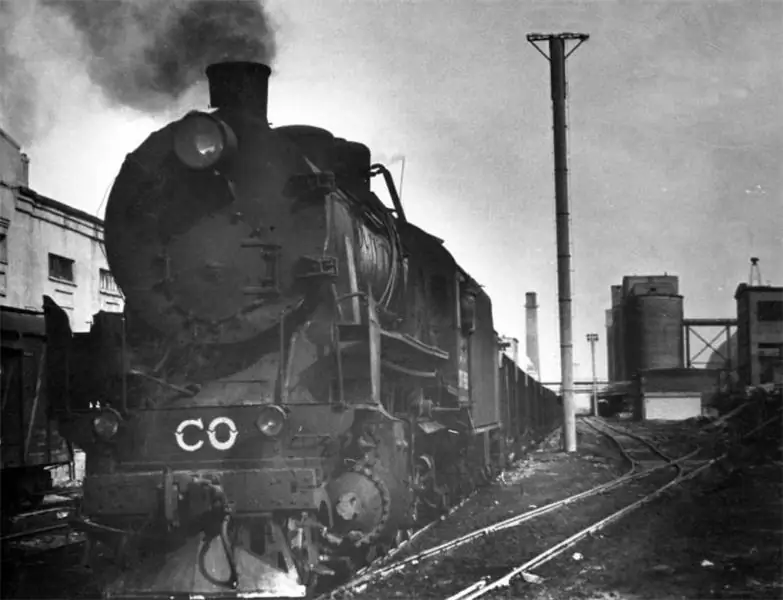
Built in 1942, a new railway line from Ilovlya station near Stalingrad to Sviyazhsk station near Kazan, 978 kilometers long, connected the Stalingrad industrial region with the rest of the country. Thanks to the selfless work of the workers, who built the railway in incredibly difficult conditions, often under the bombing of German aviation, it was possible to preserve transport communications and transport connectivity important for the whole country after Hitler's troops reached the Volga and entered Stalingrad.
The Volga Rokada has become a real railway road of life for residents and defenders of the city. About 600 steam locomotives, as well as 26 thousand various carriages with equipment from Stalingrad factories, wounded and refugees, were removed from Stalingrad by the railway built in the shortest possible time. Echelons with ammunition and troops set off along the same road to the Volga, which will still say their weighty word at the start of Operation Uranus.
How the decision was made to build the Volga Rocada
1941 introduced major adjustments to the planning of measures aimed at increasing the country's defense capability. Faced with the new realities of the war, the Soviet leadership moved to large planning horizons and made a number of reinsurance decisions that turned out to be very important for the entire course of the war. The advance of German troops to Moscow in early October 1941 forced the country's leadership to plan the construction of fortified zones in the deep rear: on the Oka, Don and Volga. New lines of fortifications were to cover Gorky, Kuibyshev, Kazan, Penza, Saratov, Stalingrad, Ulyanovsk and other rear cities.
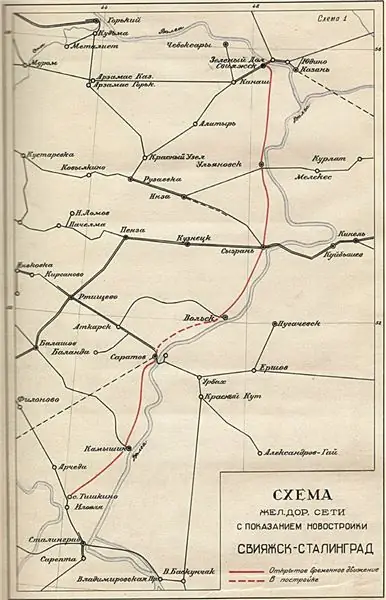
Already on October 13, 1941, the State Defense Committee (GKO) decided to build two new defensive lines - in the big bend of the Don - Chir-Tsimlyanskiy and Stalingrad (along the Kletskaya, Surovikino, Verkhnekurmoyarskaya). For the construction of fortifications near Stalingrad, the 5th Department of Defense Work was transferred from near Kharkov, which, with the beginning of the construction of fortifications near Stalingrad, was reorganized into the 5th Sapper Army. By the end of the year, 88 thousand soldiers of the sapper army and about 107 thousand residents of the city and region were already working on the construction of fortifications near Stalingrad.
Another important decision for ensuring the country's security was made in January 1942, at the height of the general counteroffensive of the Soviet troops. This decision was preceded by the fact that in the fall of 1941 the railway communication on the Moscow - Kursk - Kharkov - Rostov-on-Don line was interrupted. This railway was of great importance for the life and defense of the whole country. After the Germans reached the highway, all military traffic, freight traffic and passenger traffic were switched to the Volga railway lines, which passed through a large industrial hub - Stalingrad.
Realizing what consequences the interruption of this transport artery may have, the Soviet military-political leadership, represented by the State Defense Committee, on January 23, 1942, decides to start building a new railway line from Stalingrad inland through Saratov, Syzran and Ulyanovsk to the city of Sviyazhsk near Kazan. This highway went down in the history of the war as the Volga Rockada.

Roads are called roads - railway, highway, ordinary dirt, which run in the front line parallel to the front line. Rockads are needed by every army both in the offensive and in defense, as they help to provide maneuver with troops and military cargo, without which it is impossible to conduct hostilities. The idea of building the Volga Rocada in January 1942 became visionary. This strategically correct decision, directly affecting the outcome of the war, was made against the background of the outlined successes of the Red Army at the front, on the wave of general upsurge and jubilation and the newly emerging victorious moods. Many really believed that in 1942 the Nazis would be able to defeat and expel from the USSR.
Preparation for the construction of the Volzhskaya rokada
By order of February 22, 1942, the construction of a new railway line was entrusted to the Construction Department of the Volzhlag of the Main Directorate of Railway Construction Camps (GULZhDS) of the NKVD of the USSR. The head of the construction was Major General Fedor Alekseevich Gvozdevsky, who previously headed the work at the BAM project. In addition, construction organizations were reinforced with personnel and sapper units from the 5th Sapper Army, who worked on the construction of defensive lines on the outskirts of Stalingrad.
At the same time, in February, the first survey expeditions took place in the places of the proposed construction of the railway. It quickly became clear that it would not be possible to build a road just along the Volga. Before Kamyshin, the profile of the terrain was suitable, but further there was a large number of elevation changes at the mouths of rivers flowing into the Volga, and huge ravines. After that, Gvozdevsky turned to the option of building a road along the Ilovlya river valley. Exploratory expeditions on this route of the proposed construction took place in February-March 1942.
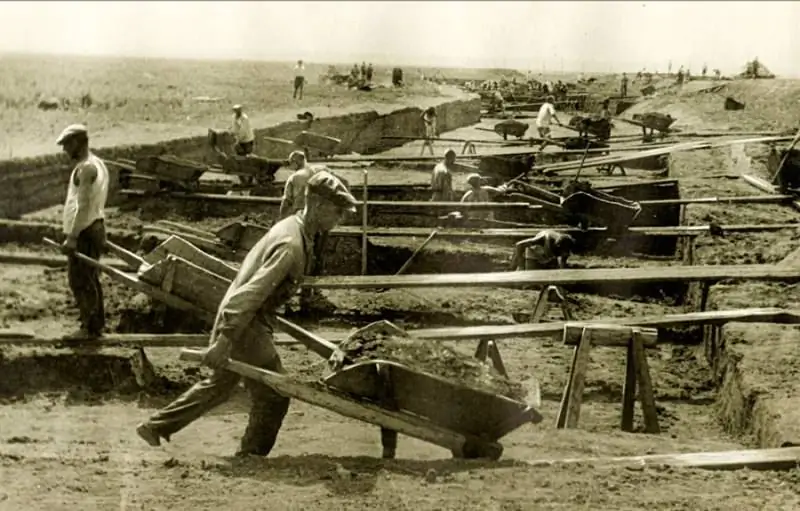
The expeditions carried out and a detailed acquaintance with the terrain through which the new railway artery was to pass, made it possible to choose the optimal route at that time. It was decided to build a railway from the Ilovlya station along the river of the same name to the intersection with the Kamyshin-Tambov branch. Further, the road was supposed to go to Bagaevka and along the already existing automobile grader (dirt road) to Saratov. Thus, the route of the future Volga rokada went along the banks of the steppe rivers, this was important, since steam locomotives, which are the main traction on the railway, consumed a lot of water. At the same time, the terrain itself: its profile and the existing road network made it possible to build the road faster and spend less time and energy on earthworks.
The final project of the Volga Rocada was approved by the State Defense Committee on March 17, 1942, when no one could even imagine the upcoming disaster near Kharkov and the subsequent retreat to the Volga. The new road was planned to be built through the densely populated areas of the Stalingrad region, as well as through the territory of the former national autonomy of the Volga Germans, who were deported from their homes after the start of the Great Patriotic War. The fact that the area was inhabited was of great importance, since subsequently masses of collective farmers and civilians from among the local population were involved in the construction. The designers of the railway also counted on the fact that the local population would help with the operation and maintenance of the road (stations, bridges, stretches and sidings) in the future. At the same time, the empty villages and empty houses of the Volga Germans were planned to be used to accommodate the builders themselves, which was also of great importance for the entire construction site.
Rails for the construction of the road were carried even from the BAM
The construction of the new road immediately ran into serious difficulties. The first was climatic - the spring of 1942 was quite cold and protracted. On many construction sites, the snow melted only in the second half of April, by the 20th. In turn, this influenced the timing of the start of sowing campaigns. This was important, since collective farm workers were actively involved in the construction, but due to the late spring, they were released only by the end of the first decade of June.
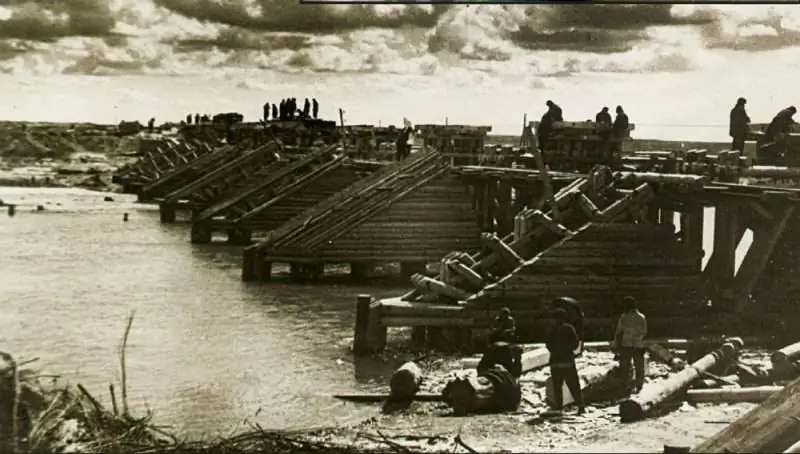
The second even more important problem was the lack of building materials. Railroad workers immediately faced a shortage of rails and sleepers. This is not surprising, if we take into account the fact that the entire economy of the USSR by that time had already passed or was in the process of an active transition to a war footing. Most of the rail-rolling factories that existed in the country switched from the production of civilian products to the fulfillment of military orders and the production of military equipment for the front.
The way out of the situation was to dismantle the tracks from the active construction of the BAM, which began in 1938. By order of the State Defense Committee, the 180-kilometer branch, which had already been erected on the Bam-Tynda line, was dismantled and transferred to Stalingrad to build a new road. Track links and bridge girders from this site were delivered for the construction of the Volga road. But this was enough only for the construction of a stretch from Ilovlya station to Petrov Val station. Additionally, the rails were dismantled in the western regions of the country in the combat zone, they were literally taken out from under the noses of the advancing Nazis. These exported lashes were enough for the section from Petrov Val to Saratov. Additionally, the State Defense Committee instructed the People's Commissariat of Foreign Trade to import 1200 km of rails with fasteners from the United States for construction work. And in total during the war years, the Soviet Union received 622 thousand tons of American rails as part of the Lend-Lease program.
Large human resources were involved in the construction of the railway, including the prisoners of the GULAG, who arrived at the construction site from the Far East along with the dismantled tracks of the BAM. Two corrective labor camps (ITL) were quickly set up at the site: Saratovsky, located in the village of Umet, and Stalingradsky, located in the village of Olkhovka. From September 11, 1942, both camps were united into the Privolzhsky ITL of strict regime, which existed until December 1944.
At the same time, the contribution of prisoners to the construction was large, but not decisive. Local peasants were mobilized en masse to carry out the work. Tens of thousands of collective farmers worked on the construction, a large number of women and teenagers, who endured all the hardships of this work. Sappers of the 5th Combat Engineer Army, specialized construction units from all over the Soviet Union and civilians also contributed. According to the recollections of some builders, the labor of German prisoners of war was also used to build the road.
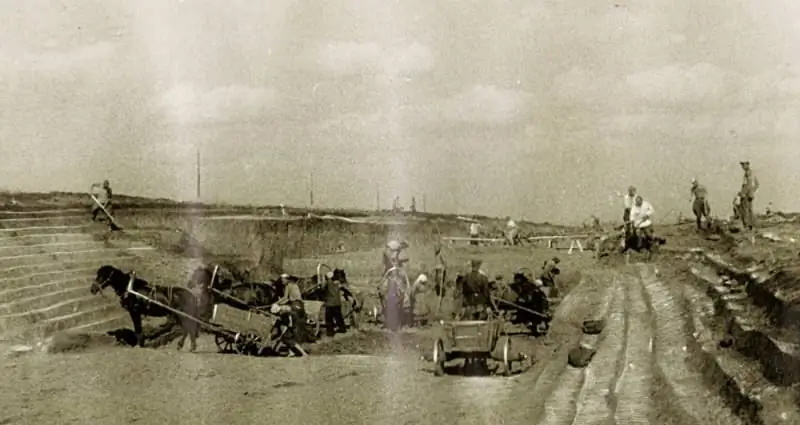
To simplify construction, most of the bridges built on the Volga Rockade were made of wood. The rails on the road were laid by hand. Manually, they were engaged in the arrangement of the embankment. The land was transported using wheelbarrows and grabars (a cart or wheelbarrow used for excavation work). The use of construction equipment was extremely limited. Experienced workers and problems with food, the supply of work clothes and medicines. Wartime left a serious imprint on the work, while at the time of construction, the country, as well as in the autumn-winter of 1941, was literally on the verge of disaster. At Stalingrad, without any exaggeration, the fate of the war was decided.
In July and August, the most unpleasant thing was added to everyday difficulties. Beginning on July 22, 1942, the Germans began to bombard sections of the road construction, especially those that were closer to Stalingrad and the front. Enemy aircraft interfered with construction, diverting part of the forces to restore damaged sections of the track. At the same time, during air strikes, the builders themselves suffered human losses. And after the enemy seized the right bank of the Don in the Kletskaya area, artillery shelling was added to the air raids. Now the heavy artillery of the Germans could shell the area of the Ilovlya station.
Volga Rockada was erected in just six months
Despite all the difficulties, under German bombs and shells, with a lack of food in the most difficult wartime conditions, the builders coped with their work in record time. The new railway with a total length of 978 kilometers was built in six months. Before that, no one in the world had ever built railways at such a speed, especially in a war.
Already on September 23, the government commission accepted the Ilovlya - Petrov Val railway line for temporary operation, on October 24, the next section Saratov - Petrov Val was accepted. At the same time, on October 15, a trial movement of trains began on the entire section from Sviyazhsk (near Kazan) to the Ilovlya station. And in the final version, the entire line was accepted by the commission and put into operation on November 1, 1942. Thanks to the organization of the circular traffic scheme, the throughput of the constructed railway was quickly increased from 16 to 22 trains per day.
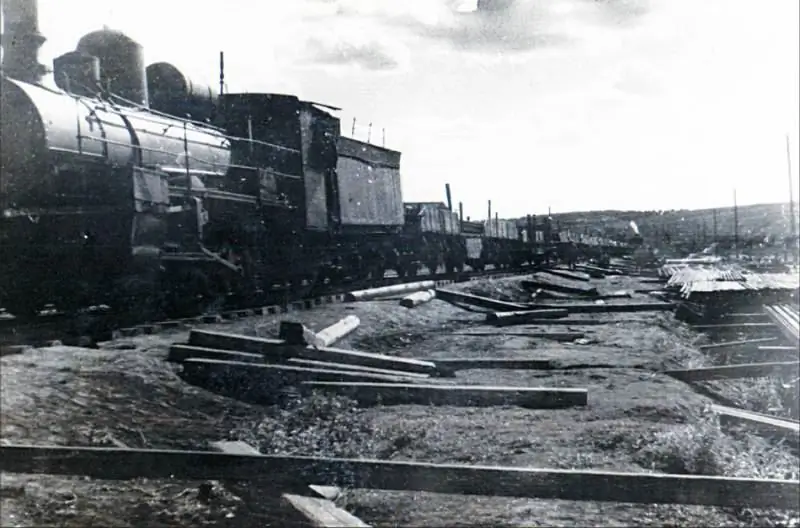
The new railway became an important artery feeding the Soviet troops in the Stalingrad region and in the south of the country. Reserves, ammunition and food were transferred by rail. The wounded, damaged equipment, evacuated equipment and evacuated citizens were transported along it into the interior of the country. The constructed road became an important component of the successful operation of Operation Uranus, before which the Soviet troops had managed to accumulate a sufficient number of troops and equipment. In October-November 1942 alone, 6, 6 thousand carriages with weapons and ammunition were delivered to the front by the new railway.
The road, built during the Great Patriotic War, is still in use today. According to the Russian Railways website, the Saratov-Volgograd section today is part of the main route between Kuzbass and the Azov-Black Sea region of Russia. Every day, thousands of tons of various cargoes are transported along this section, and thousands of tourists pass here to Russian resorts to the Black Sea.






